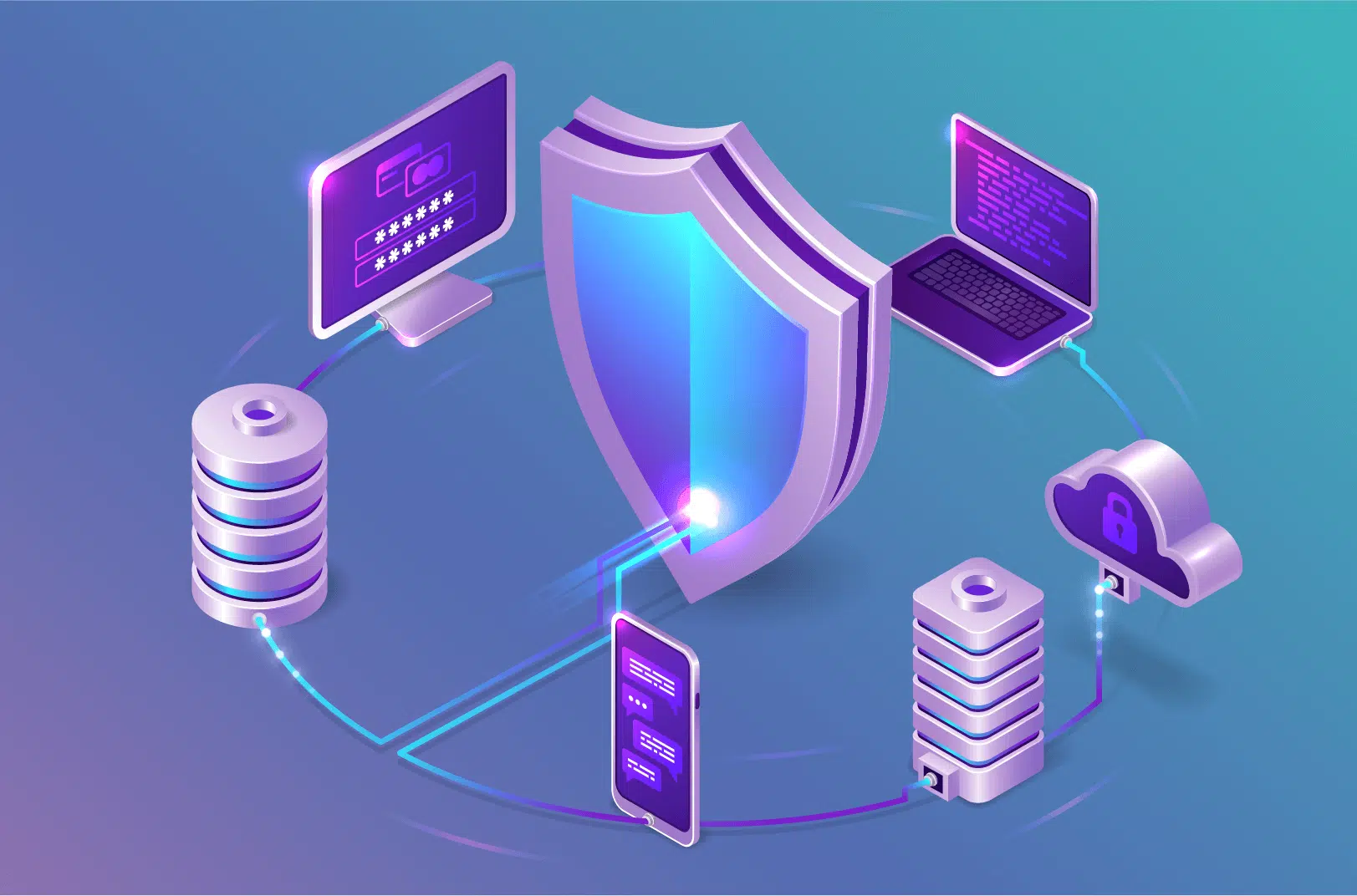
In today's digital landscape, safeguarding your website is paramount. Cyber Attackers are at every virtual corner, targeting websites and searching for vulnerabilities in websites of all sizes. A successful attack can have devastating consequences, from data breaches and financial losses to reputational damage. Also, according to Security Magazine, there are over 2,200 attacks each day which breaks down to nearly 1 cyberattack every 39 seconds. Cybersecurity threats are a growing concern, and website owners can't afford to ignore them.
This blog post delves into some of the most prevalent website security threats that can compromise your website's safety. By understanding these threats, you can take proactive steps to safeguard your website and prevent becoming another statistic.
Data breach
Data breaches, the unwanted disclosure of sensitive information, have become a harsh reality of the digital age. While accidental data breaches do occur, the greater threat comes from cybercriminals actively targeting sensitive information.
These digital thieves target weaknesses in websites and apps, aiming to steal a treasure trove of personal data – from financial details and medical records to student transcripts and private messages. Their stolen loot can be sold on the black market for a hefty price or used to gain access to a company's entire computer network.
The fallout from a data breach is significant. People whose information is exposed face a multitude of risks, including identity theft and financial fraud. They may even resort to legal action against the company responsible for the breach. Governments are also cracking down on data security lapses, imposing heavy fines on organizations that fail to protect user information adequately. Beyond legal repercussions, a company's reputation suffers as trust evaporates in the wake of a data breach.
Data breaches are a clear and present danger. By understanding the risks and implementing robust security measures, businesses can safeguard sensitive information and protect both themselves and their customers.
Denial of Service (DoS) and loss of website availability
Denial-of-Service (DoS) attacks are digital roadblocks aimed at crippling a website, application, or server, rendering it unusable for its intended purpose. Attackers exploit various vulnerabilities to achieve this. They might bombard the target with a massive influx of fake traffic, overwhelming its resources and preventing legitimate users from accessing it. This is akin to a crowd deliberately blocking the entrance to a store, stopping anyone else from entering.
DoS attacks can also exploit weaknesses in programming or resource management. Imagine a flaw in the store's security system allowing unauthorized access, effectively shutting down operations. Furthermore, some DoS attacks go beyond simply blocking access. Hackers might exploit vulnerabilities to inject malicious code, potentially stealing sensitive information or taking control of the server.
The outcome of a successful DoS attack is a significant drop in service quality for legitimate users. Delays, outages, and service interruptions become commonplace, causing frustration and hindering business activities. These attacks directly impact availability, preventing users from interacting with the targeted service.
Ransomware
Imagine your computer files suddenly locked away in a digital vault, inaccessible and unusable. That's the chilling reality of ransomware, a malicious software that encrypts your data, essentially holding it hostage. Attackers exploit vulnerabilities to infiltrate your system, then scramble your files with complex code, rendering them unreadable. The only way to regain access, they claim, is by paying a ransom – a hefty sum demanded by the cyberattackers.
Ransomware isn't just a personal nightmare; it's a growing threat crippling organizations of all sizes. This digital extortion scheme often targets databases and file servers, potentially paralyzing an entire network. The consequences are devastating – businesses face lost productivity, data breaches, and reputational damage.
The financial toll is equally alarming. Ransomware attacks have generated billions of dollars in payments to cyberattackers, causing significant economic damage. Businesses and government organizations alike are increasingly vulnerable, making awareness and proactive measures essential for defense.
Cross-site scripting (XSS)
Cross-site scripting (XSS) attacks represent a form of injection where harmful scripts are inserted into typically harmless and trusted websites. These attacks occur when a perpetrator leverages a web application to transmit malicious code, often in the guise of a browser-side script, to another user. Vulnerabilities enabling these attacks are widespread and manifest wherever a web application incorporates user input into its generated output without proper validation or encoding.
By exploiting XSS, an attacker can dispatch a malevolent script to an unsuspecting user. The recipient's browser, unaware of the script's corrupt nature, executes it under the presumption of trustworthiness. This allows the malicious script to access sensitive browser-stored information such as cookies, session tokens, and other confidential data associated with the site. In some instances, these scripts can even manipulate the HTML page's content. For a deeper exploration of the various XSS vulnerabilities, refer to: Types of Cross-Site Scripting.
SQL and code injections
SQL injection, also referred to as SQLI, stands as a prevalent method of attack, utilizing malicious SQL code to manipulate backend databases and access information not originally intended for display. This compromised data could encompass a variety of sensitive assets, ranging from confidential company data to user directories or private customer particulars.
The ramifications of SQL injection on a business can be extensive. A successful breach might entail unauthorized access to user directories, the deletion of entire database tables, and in certain scenarios, the attacker acquiring administrative privileges, all of which pose significant threats to a company's operations.
When assessing the potential fallout of an SQLi incident, it becomes crucial to account for the erosion of customer trust in the event of personal data compromise, including the pilfering of phone numbers, addresses, and credit card information.
Although SQL injection can target any SQL database, websites remain the primary focal point for such attacks.
Stolen passwords
While passwords are the cornerstone of website security, they can be surprisingly fragile. Hackers employ various tactics to bypass these safeguards. One method involves brute force attacks, where software programs systematically guess password combinations until they crack the code. This risk is amplified when web developers use weak, default passwords for administrator accounts – essentially handing over the keys to an attacker.
The consequences of a compromised website password can be severe. Hackers wielding stolen credentials can deface the website, disrupting its appearance and functionality. Additionally, they might delete critical files or engage in more nefarious activities, causing significant damage.
Phising Attacks
Phishing is a sneaky way scammers use to trick people into sharing their personal information, like passwords or credit card details. They might send you emails or messages that look like they're from a company you trust, asking you to click on a link or provide sensitive information. If you fall for it and click on the link, you could end up downloading harmful software onto your device, allowing scammers to steal your data or even take over your accounts. This can lead to all sorts of problems for individuals, like unauthorized purchases or identity theft.
But phishing isn't just a problem for individuals—it can also cause big headaches for businesses. If scammers manage to get their hands on sensitive company information through phishing attacks, it can lead to significant financial losses and damage the company's reputation. Plus, if scammers gain access to corporate networks, they can cause even more trouble by spreading malware or accessing confidential data. That's why it's important for everyone to be vigilant and cautious when it comes to emails or messages asking for personal information.
Supply Chain Attacks
Supply chain attacks are a type of cyberattack that targets the broader ecosystem of a company's suppliers and partners rather than directly attacking the company itself. In these attacks, hackers infiltrate and compromise a trusted supplier's network or software system. They then use this access to introduce malicious code, backdoors, or other vulnerabilities into the products or services provided by the supplier. When the compromised products or services are used by the target company, the malware or vulnerabilities can be exploited to gain unauthorized access to the target's network, steal sensitive information, disrupt operations, or carry out other malicious activities.
These attacks are particularly subtle because they exploit the trust established between the target company and its suppliers. Since the compromised components come from trusted sources, they may not raise suspicion and can bypass traditional security measures. Supply chain attacks can have far-reaching consequences, affecting not only the targeted company but also potentially impacting its customers, partners, and even the broader supply chain ecosystem.
Malicious Code Attacks
Malicious code attacks, also known as malware attacks, involve the deployment of harmful software designed to disrupt, damage, or gain unauthorized access to computer systems or networks. This type of attack encompasses various forms of malicious code, including viruses, worms, Trojans, ransomware, spyware, and adware.
Malicious code attacks can cause significant damage, leading to data loss, financial losses, system downtime, privacy breaches, and reputational damage. Prevention measures include using antivirus software, keeping systems updated, practicing safe browsing habits, and implementing security best practices. Additionally, user education and awareness are crucial for recognizing and avoiding potential threats.
Security Misconfigurations
Imagine your house has strong locks, but you leave the windows wide open! Security misconfigurations are like that for websites. These happen when security settings aren't properly set up or maintained. Outdated software, weak passwords, and unnecessary features all create gaps that attackers can exploit. By keeping software updated, using strong passwords, and following security best practices, website owners can tighten these gaps and keep their websites secure.
Insecure Direct Object References (IDOR)
Insecure Direct Object References (IDOR) are a web security weakness that exploits how websites control access to your information. Imagine a filing cabinet where each user's data has a unique code for identification. Ideally, only authorized users with the proper key (permission) can access specific files. But IDOR vulnerabilities are like leaving the cabinet unlocked with the codes written directly on the folders. An attacker could potentially stumble upon these codes, manipulate them slightly (like changing a number in a URL), and gain unauthorized access to other users' data. This can lead to stolen information, compromised accounts, or even disruption of the website itself. To prevent IDOR, websites need strong access controls that verify user permissions before granting access, not relying solely on user-supplied data to determine who can see what.
Viruses and Worms
Viruses and worms are like digital vandals that spread through computers and networks. Both exploit software weaknesses to steal information and potentially damage systems. They can even create backdoors for attackers to return later. The key difference lies in how they spread: viruses need a host program, like a downloaded file, to infect your device. Worms, on the other hand, are self-replicating and can jump from computer to computer, clogging up resources and causing crashes. Think of them like fast-spreading digital gremlins that overload everything they touch. By understanding these threats, you can take steps to protect yourself from these digital troublemakers.
Spyware
Imagine someone sneaking around your computer, stealing your secrets! That's what spyware does. It's a sneaky program that spies on you, collecting data like passwords, browsing history, and even credit card information. This stolen information can then be sold to advertisers, criminals, or anyone willing to pay. Spyware can be hard to detect, but it can cause big problems for your device and even your entire network. It can slow things down, make your computer vulnerable to attacks, and even allow criminals to steal your identity. Be cautious and use security software to protect yourself from these digital spies!
Conclusion
To sum up, keeping websites safe from cyberattackers is super important. We've talked about how ransomware, cross-site scripting, SQL injections, and password breaches can cause big trouble. The key takeaway is that website owners and developers need to stay alert and use strong defenses to keep the bad guys out. By staying informed and taking action to protect our websites, we can keep our digital spaces safe and trustworthy for everyone.
Recap: Enhance Your Web Security
Worried about cyberattacks disrupting your business? We understand every company, regardless of industry, is a target. That's where Anchor Points comes in! We help businesses like yours build a strong defense against cyber threats. Our solutions focus on securing your web applications and APIs, the gateways to your valuable data.
We offer protection from a range of attacks, including denial-of-service assaults, data scraping attempts, brute-force login attempts, and even help identify vulnerabilities before they can be exploited. By partnering with us, you can minimize security risks and ensure your business operations run smoothly.
Don't wait until it's too late! Contact us today or schedule a call with our security specialists to learn more about how we can help you.



